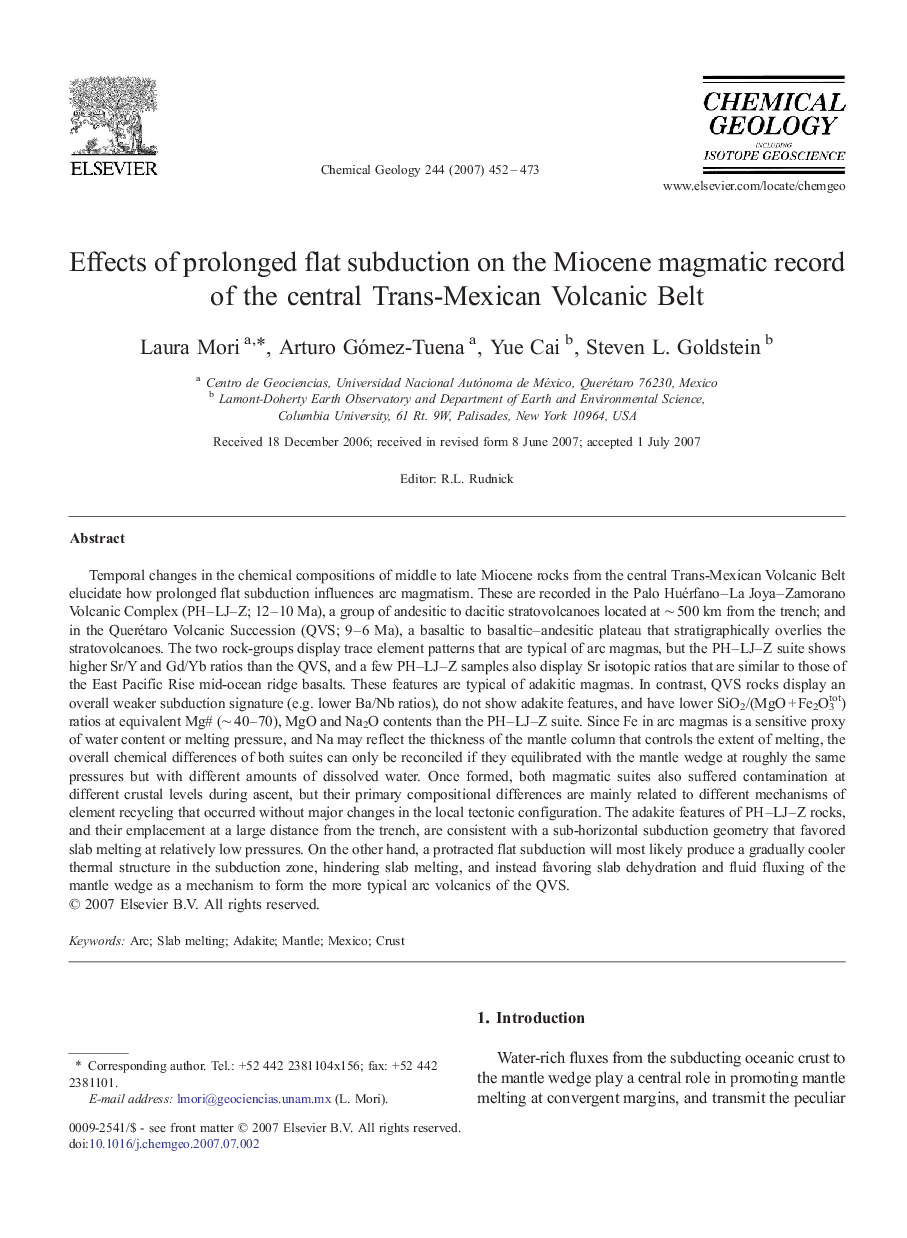| کد مقاله | کد نشریه | سال انتشار | مقاله انگلیسی | نسخه تمام متن |
|---|---|---|---|---|
| 4700901 | 1637741 | 2007 | 22 صفحه PDF | دانلود رایگان |

Temporal changes in the chemical compositions of middle to late Miocene rocks from the central Trans-Mexican Volcanic Belt elucidate how prolonged flat subduction influences arc magmatism. These are recorded in the Palo Huérfano–La Joya–Zamorano Volcanic Complex (PH–LJ–Z; 12–10 Ma), a group of andesitic to dacitic stratovolcanoes located at ∼ 500 km from the trench; and in the Querétaro Volcanic Succession (QVS; 9–6 Ma), a basaltic to basaltic–andesitic plateau that stratigraphically overlies the stratovolcanoes. The two rock-groups display trace element patterns that are typical of arc magmas, but the PH–LJ–Z suite shows higher Sr/Y and Gd/Yb ratios than the QVS, and a few PH–LJ–Z samples also display Sr isotopic ratios that are similar to those of the East Pacific Rise mid-ocean ridge basalts. These features are typical of adakitic magmas. In contrast, QVS rocks display an overall weaker subduction signature (e.g. lower Ba/Nb ratios), do not show adakite features, and have lower SiO2/(MgO + Fe2O3tot) ratios at equivalent Mg# (∼ 40–70), MgO and Na2O contents than the PH–LJ–Z suite. Since Fe in arc magmas is a sensitive proxy of water content or melting pressure, and Na may reflect the thickness of the mantle column that controls the extent of melting, the overall chemical differences of both suites can only be reconciled if they equilibrated with the mantle wedge at roughly the same pressures but with different amounts of dissolved water. Once formed, both magmatic suites also suffered contamination at different crustal levels during ascent, but their primary compositional differences are mainly related to different mechanisms of element recycling that occurred without major changes in the local tectonic configuration. The adakite features of PH–LJ–Z rocks, and their emplacement at a large distance from the trench, are consistent with a sub-horizontal subduction geometry that favored slab melting at relatively low pressures. On the other hand, a protracted flat subduction will most likely produce a gradually cooler thermal structure in the subduction zone, hindering slab melting, and instead favoring slab dehydration and fluid fluxing of the mantle wedge as a mechanism to form the more typical arc volcanics of the QVS.
Journal: Chemical Geology - Volume 244, Issues 3–4, 15 October 2007, Pages 452–473